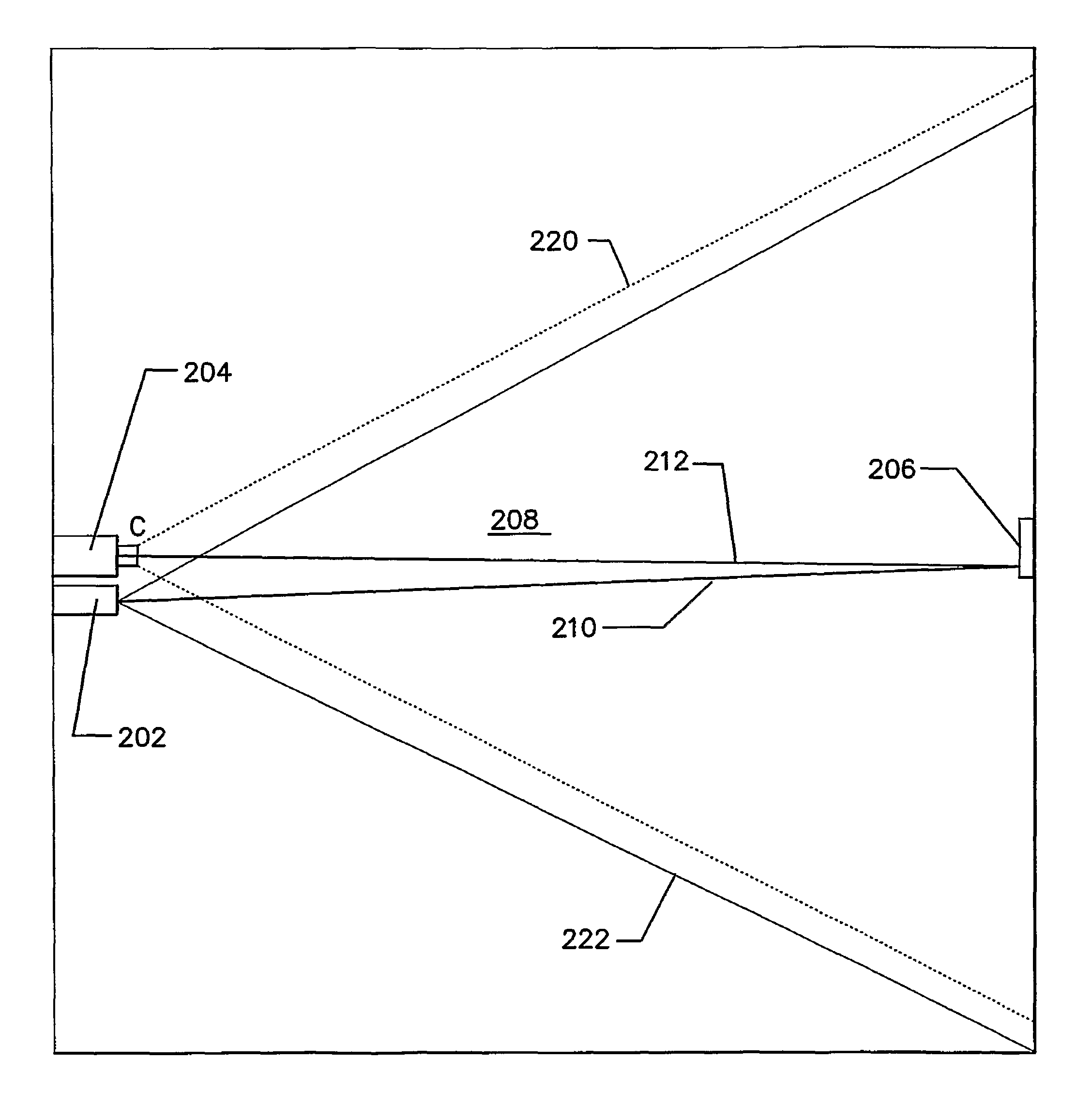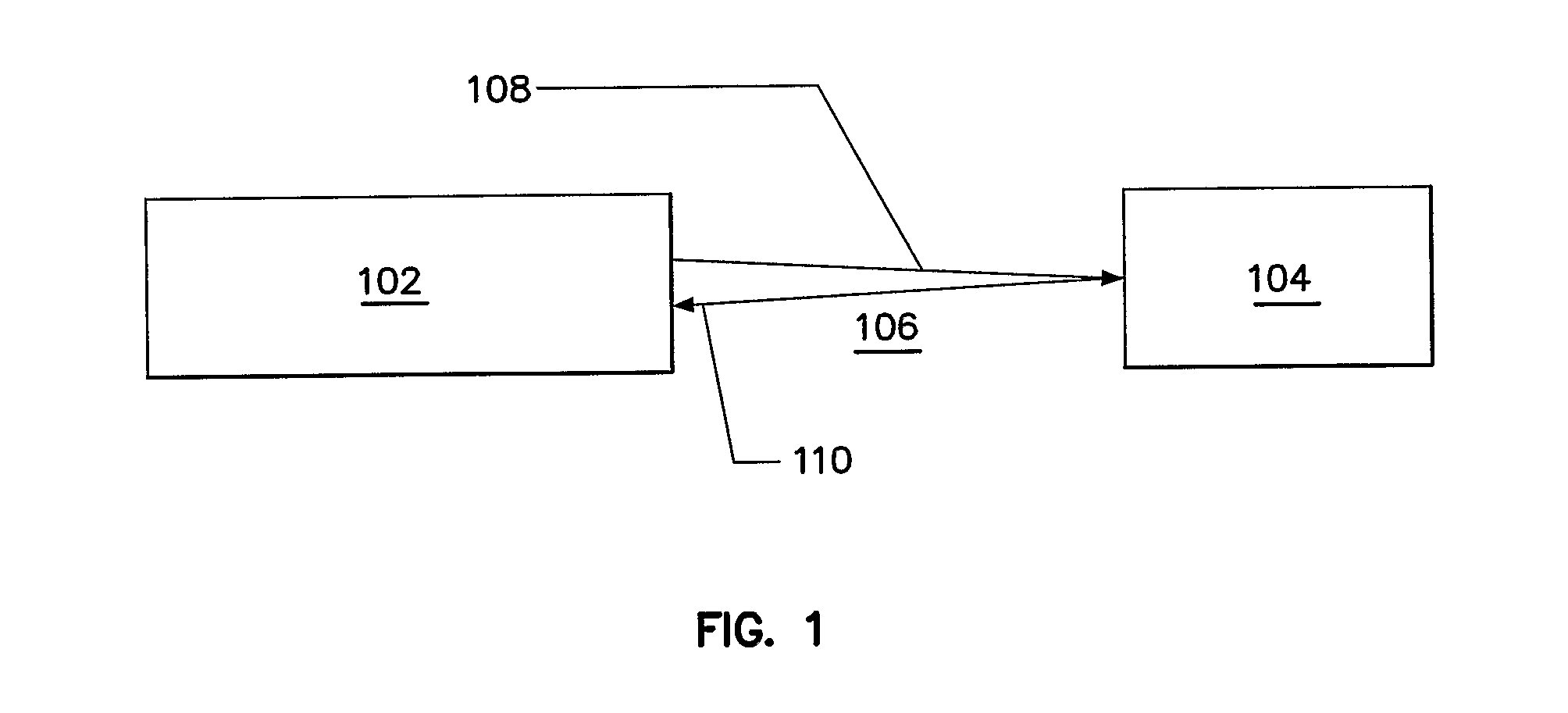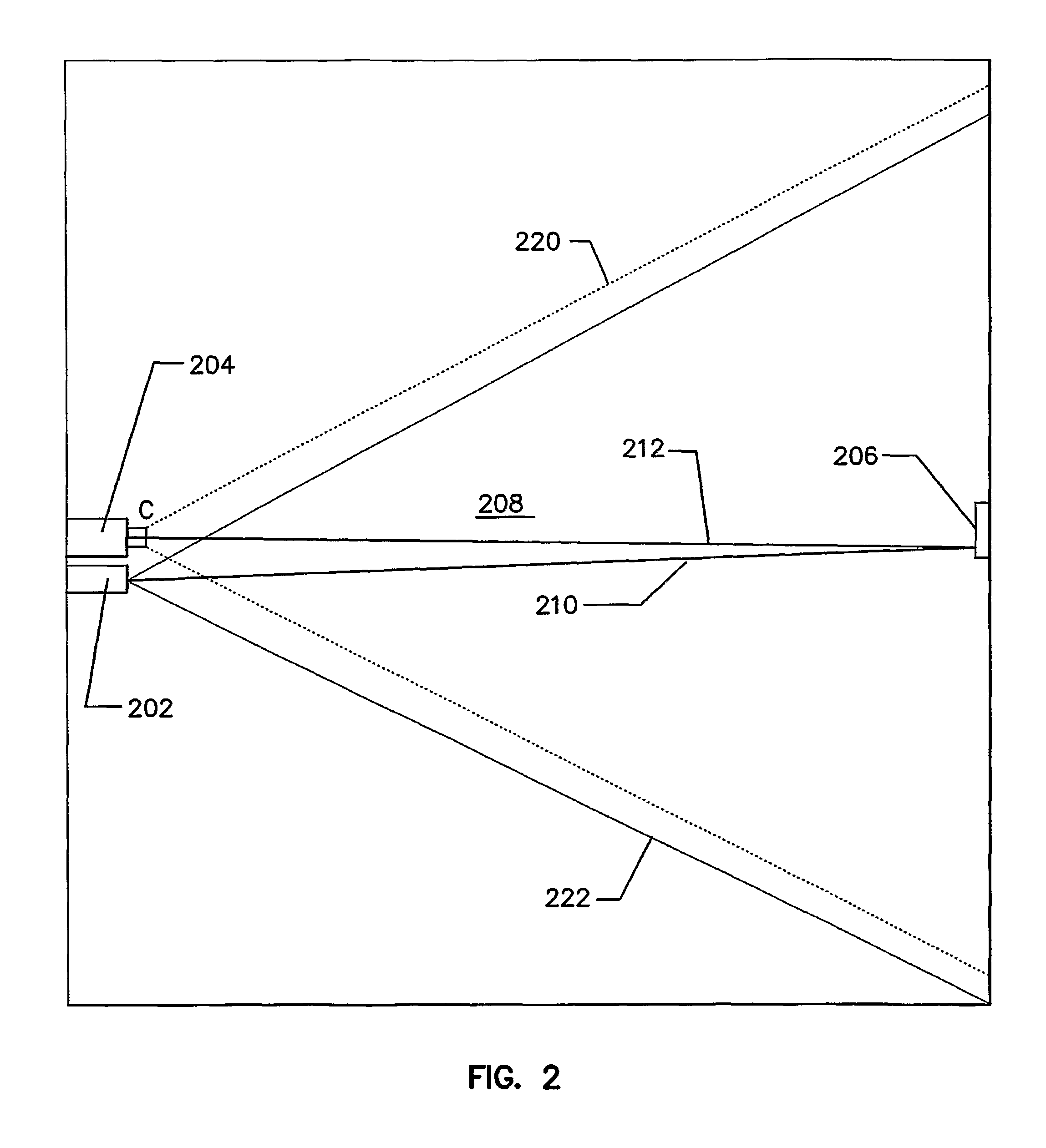Particle detection
a particle detection and particle technology, applied in the field of particle detection, can solve the problems of general inability to distinguish detectors, slow calibration, and type i (false positive) errors of beam detectors
- Summary
- Abstract
- Description
- Claims
- Application Information
AI Technical Summary
Benefits of technology
Problems solved by technology
Method used
Image
Examples
Embodiment Construction
[0157]FIG. 2 shows an embodiment of the present invention. The detector 200 includes a light emitter 202, a receiver 204, and a target 206, acting in co-operation to detect particles in a monitored area 208. Target 206 reflects incident light 210 and thereby forms a light source and returns reflected light 212 to receiver 204. Preferably the target is a corner cube or other reflector adapted to reflect light back along its incident path, or other determined path.
[0158]The term light source as used is intended to be interpreted to include a device that actively produces an illumination from one or more (generally termed a light emitter or transmitter herein) as well as a reflector of an illumination generated by another device (generally termed a target or reflector herein).
[0159]In the preferred embodiment the receiver 204 is preferably a video camera or other receiver having an array of light sensors. A person skilled in the art would appreciate that receiver 204 may be constructed...
PUM
| Property | Measurement | Unit |
|---|---|---|
| field of view | aaaaa | aaaaa |
| field of view | aaaaa | aaaaa |
| wavelength | aaaaa | aaaaa |
Abstract
Description
Claims
Application Information
 Login to View More
Login to View More - R&D
- Intellectual Property
- Life Sciences
- Materials
- Tech Scout
- Unparalleled Data Quality
- Higher Quality Content
- 60% Fewer Hallucinations
Browse by: Latest US Patents, China's latest patents, Technical Efficacy Thesaurus, Application Domain, Technology Topic, Popular Technical Reports.
© 2025 PatSnap. All rights reserved.Legal|Privacy policy|Modern Slavery Act Transparency Statement|Sitemap|About US| Contact US: help@patsnap.com



